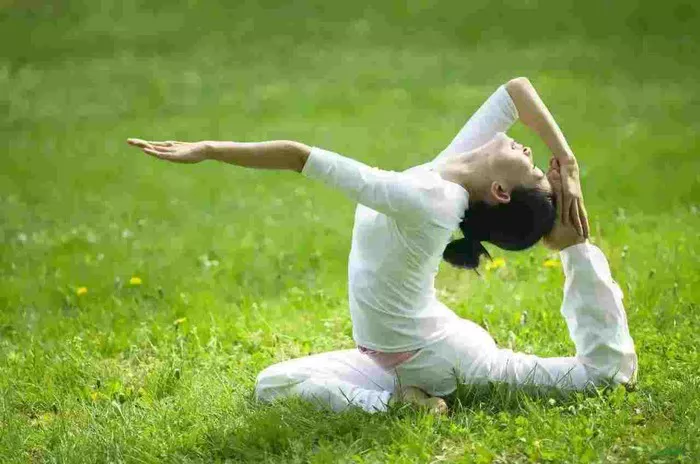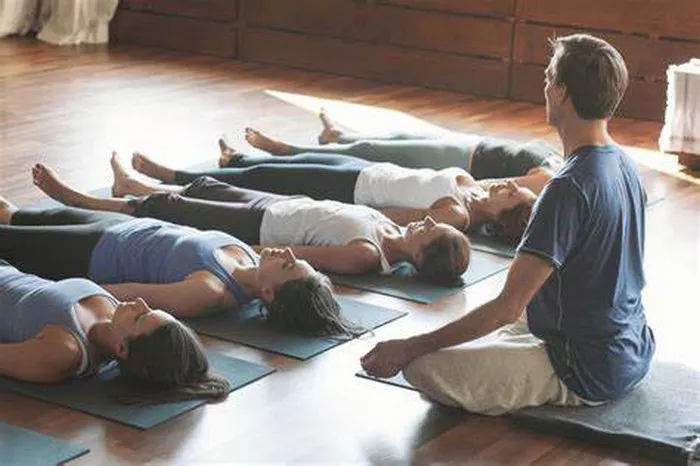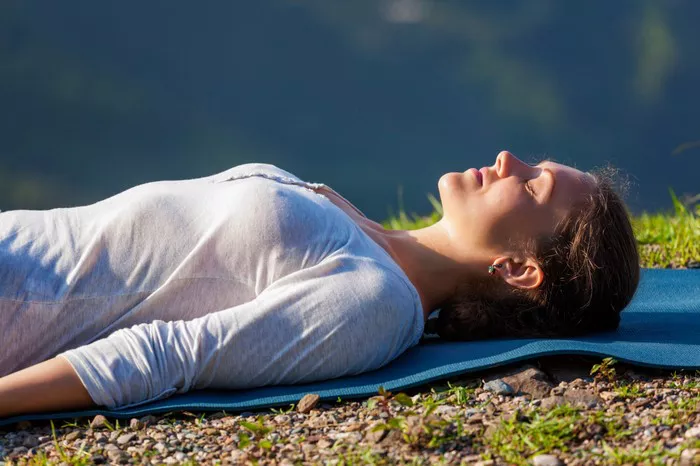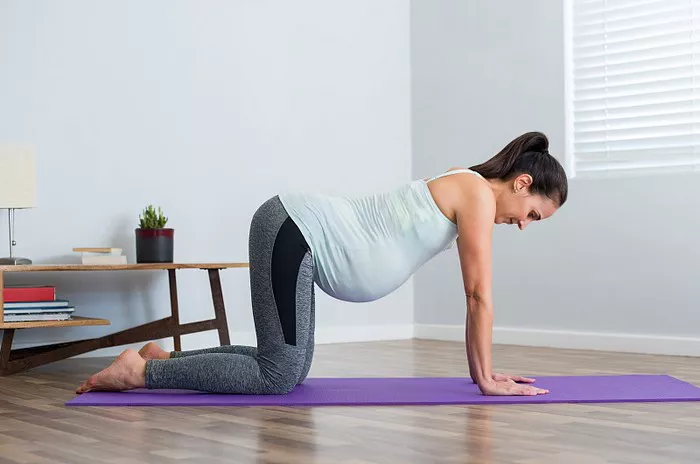Trikonasana, commonly known as Triangle Pose, is a widely practiced and highly beneficial yoga posture that offers numerous advantages. It stretches and strengthens various parts of the body, increases flexibility, improves balance, and enhances overall body alignment. Like all yoga postures, Trikonasana provides its practitioners with both physical and mental benefits. However, despite its general accessibility, there are certain individuals for whom this pose may not be advisable. In this article, we will explore who should avoid performing Trikonasana, the reasons behind these contraindications, and alternative poses that may provide similar benefits without the risks.
Understanding Trikonasana (Triangle Pose)
Trikonasana is a standing yoga posture that requires practitioners to spread their legs wide apart, with one arm reaching toward the sky and the other arm extended downward along the outstretched leg. This pose engages multiple muscle groups, including the legs, hips, spine, and core, while also improving mental focus and concentration. The major benefits of Trikonasana include:
Stretching and Strengthening: The pose stretches the legs, hips, and spine while strengthening the legs, core, and shoulders.
Improved Balance: Practicing Trikonasana helps improve overall balance and stability by engaging the core and leg muscles.
Enhanced Flexibility: It helps to increase flexibility in the hamstrings, hips, and spine.
Promoting Digestive Health: The twist in Trikonasana can stimulate the digestive organs and promote better digestion.
Relieving Stress: Like many yoga postures, it can help alleviate tension, reduce stress, and encourage a calm and focused mind.
Despite these benefits, there are specific conditions and physical limitations that could make Trikonasana unsafe for some individuals. Below, we will look at the various conditions and reasons why certain people may need to refrain from performing this asana.
1. Pregnancy
Pregnancy is one of the key factors that might prevent an individual from performing Trikonasana safely. During pregnancy, especially in the second and third trimesters, a woman’s body undergoes several physiological changes, including an increase in joint laxity due to hormonal changes, an expanding belly, and a shift in center of gravity. This can make balancing and twisting difficult and uncomfortable.
Why Avoid Trikonasana During Pregnancy?
Balance: Pregnancy affects balance, and performing postures that require stability, like Trikonasana, can increase the risk of falls.
Pressure on the Abdomen: The deep side stretch in Trikonasana can place pressure on the abdomen, which may not be comfortable for a pregnant individual.
Twisting Movements: The pose requires a mild twist, which may not be advisable during pregnancy, particularly in the later stages, as it can interfere with proper blood flow to the uterus and the developing fetus.
For pregnant women, it is essential to consult with a doctor and modify yoga practices to avoid any risk. Certain poses like Warrior I or gentle stretching poses are often recommended instead.
2. Severe Back Pain or Spinal Issues
Individuals with severe back pain or spinal problems should exercise caution when practicing Trikonasana. Although Trikonasana can help improve spinal flexibility and strength, it may not be suitable for everyone, particularly those who have:
Herniated or Bulging Discs: A herniated disc involves the protrusion of the disc material between vertebrae, which can cause pain and discomfort. Twisting or deep bending in Trikonasana could exacerbate the condition.
Chronic Lower Back Pain: Those with chronic lower back pain might find that the deep stretch of the hamstrings and the bending of the spine in Trikonasana aggravates their pain.
Spinal Stenosis: A condition where the spinal canal narrows and puts pressure on the spinal cord. This can cause pain, numbness, and weakness in the lower back and legs. Trikonasana’s deep stretching could worsen the symptoms.
Why Avoid Trikonasana with Spinal Issues?
Risk of Further Injury: The combination of lateral bending and twisting could exacerbate pre-existing spinal issues and cause more discomfort or injury.
Unstable Posture: With certain spinal conditions, maintaining the correct alignment during Trikonasana may be challenging, leading to misalignment and further strain on the spine.
For those with spinal issues, alternative poses such as Cat-Cow, Child’s Pose, or supported seated stretches may offer relief without risking further strain on the back.
3. Neck Problems
The alignment of the neck is crucial during Trikonasana. While the body stretches laterally, the neck is often asked to rotate upward to look at the top hand, which can be problematic for people with certain neck conditions. Common neck issues that may make Trikonasana inadvisable include:
Cervical Spondylosis: A condition involving the degeneration of the spinal discs in the neck, leading to stiffness and pain.
Neck Strain: A recent neck injury or strain could be worsened by the movement required in Trikonasana.
Pinched Nerve: A pinched nerve in the neck can cause pain, tingling, or weakness in the arms and shoulders. Twisting the neck during the pose may intensify the symptoms.
Why Avoid Trikonasana with Neck Problems?
Risk of Straining the Neck: The pose can place undue strain on the neck, especially if one attempts to look up toward the top hand while maintaining a deep lateral bend.
Misalignment: If the neck is not properly aligned with the rest of the body, it can lead to further irritation or injury.
Those with neck issues should avoid looking up at the hand during Trikonasana. Instead, they may consider keeping the neck in a neutral position and performing a more gentle version of the pose or focus on other asanas that do not require twisting or rotating the neck.
4. Knee Injuries
Trikonasana requires a wide stance with one leg bent and the other leg straight. This can place significant strain on the knee joint, particularly for individuals with a history of knee injuries or conditions such as:
Torn Ligaments or Meniscus Tears: If you have a history of a torn ACL (anterior cruciate ligament) or meniscus tears, bending the knee during Trikonasana may aggravate the injury.
Knee Osteoarthritis: Osteoarthritis in the knees can cause stiffness, swelling, and pain. The extended stretch and deep bend in Trikonasana may worsen these symptoms.
Patellar Tendonitis: This condition involves inflammation of the tendon that connects the kneecap to the shinbone. Performing Trikonasana may lead to further irritation and pain.
Why Avoid Trikonasana with Knee Injuries?
Stress on the Knees: The forward bend with the back leg straight can increase stress on the knees, especially if the practitioner is unable to maintain proper alignment.
Limited Mobility: Individuals with knee injuries may find it difficult to achieve the wide stance needed for the pose, which could lead to instability and discomfort.
Those with knee issues can modify the pose by reducing the width of the stance or using props for additional support. Alternatively, other standing poses like Mountain Pose or Warrior II may provide similar benefits without the knee strain.
5. Hip Problems
Trikonasana requires significant hip flexibility and mobility, especially in the hips of the extended leg. People with hip issues, such as:
Hip Impingement: This condition occurs when there is abnormal contact between the bones of the hip joint, leading to pain and limited movement.
Hip Replacements: If an individual has had hip replacement surgery, certain movements may not be safe.
Tight Hips or Hip Flexors: Those with limited hip mobility may find it challenging to perform Trikonasana correctly, which can lead to discomfort or muscle strain.
Why Avoid Trikonasana with Hip Problems?
Restricted Range of Motion: Hip conditions can limit the depth of the stretch and the ability to properly align the hips in the pose.
Risk of Overstretching: Individuals with tight or injured hips may risk overstretching or misaligning the body, which could lead to further injury.
To work around hip issues, individuals can use props such as blocks or blankets to support their stance or opt for poses that focus on improving hip flexibility and strength more gently, like Bound Angle Pose or Reclined Butterfly Pose.
6. High Blood Pressure or Heart Conditions
While Trikonasana is generally safe for most people, individuals with high blood pressure or heart conditions should approach the pose with caution. The reason for this is that Trikonasana involves a slight inversion of the body and a deep stretch, both of which could put undue stress on the cardiovascular system.
Why Avoid Trikonasana with Heart or Blood Pressure Issues?
Increased Circulatory Demand: The stretching and slight inversion can increase the pressure on the heart, especially for individuals with pre-existing heart conditions.
Risk of Dizziness: For those with high blood pressure, the deep stretch and twist may cause dizziness or lightheadedness.
Those with heart conditions or high blood pressure should consult a healthcare provider before practicing Trikonasana. Gentle, restorative poses or modifications to reduce the intensity of the pose may be appropriate alternatives.
Conclusion
Trikonasana is a highly beneficial yoga posture with numerous advantages, but it is not suitable for everyone. Individuals with specific health conditions, such as pregnancy, spinal issues, neck problems, knee or hip injuries, or cardiovascular concerns, should approach this pose with caution and consult a qualified yoga instructor or healthcare provider. By understanding the contraindications and modifying the practice appropriately, practitioners can ensure that their yoga practice remains safe and beneficial. For those who cannot perform Trikonasana, there are often alternative poses and modifications that can provide similar benefits without the associated risks.
Related Topics:




















